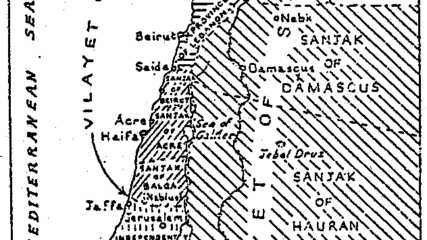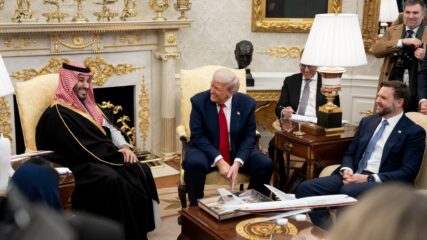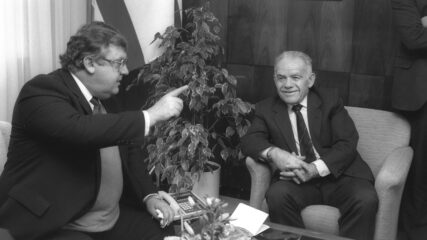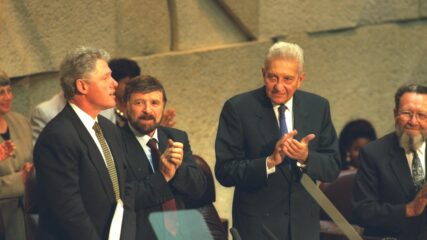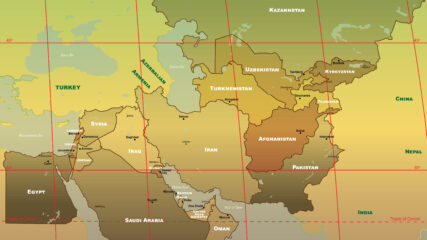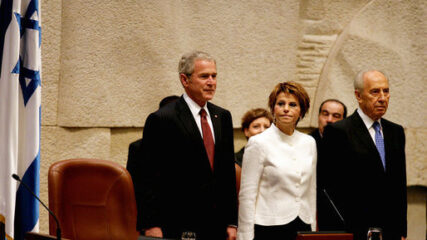June 19, 1967
Document 1, government meeting on June 18, 1967, Clause 553, State Archives, 8164/7-א, Document 2, government meeting June 18, 1967, Clause 558, State Archives, 8164/7-א, Document 3, government meeting, June 19, 1967, Clause 561, State Archives, 8164/8-א , Document 4, June 19, 1967 State Archives 8164/9-א, Document 5, government meeting, Clause 563, p. 83, State Archives 8164/8-א, The Decision on Peace with Egypt, State Archives, 7634/5-, Letter from PM Eshkol to FM Eban, State Archives 7071/5-א
Introduction
On the eve of the June 1967 war, Israeli Prime Minister Levi Eshkol expanded the government and established a national unity government. Menachem Begin and Yosef Sapir of the Herut-Liberal bloc joined as ministers without portfolio, and Moshe Dayan of the List of Israel Workers joined as the defense minister. At the end of the war discussions began to set the government’s policy with regard to the territories that Israel captured. The background for the discussions was Israel’s apprehension that she might be subjected to pressure for fast withdrawals, as was the case after the Sinai campaign in 1956-57. The discussions commenced within the framework of the ministers who were members of the Security Committee (held June 14-15, 1967), but the members of the committee failed to reach a consensus, and the matter was moved to the full forum of the government.
The Background for the Government Discussions
The war ended June 10, 1967, the greatest military victory of the State of Israel. Israel Defense Forces troops were deployed in the Golan Heights, along the Jordan River and along the Suez Canal. The IDF was in full control of the large area stretching from Hermon in the north down to the Straits of Tiran at the southern edge of the Sinai Peninsula.
The Government Discussions on June 18
On the morning of June 18 the government plenum commenced the discussions. This was the first discussion of the Israeli government with regard to the future of the captured territories, and that conversation has continued, in one way or another, ever since. Foreign Minister Abba Eban did not participate in these deliberations because he was in New York conducting the diplomatic campaign in the United Nations against the attempts to alter the results of the Six-Day War. Minister of Tourism Moshe Kol contested Eshkol’s decision as the chairman of the Ministers’ Committee for Security that the Jordan River should be the security border of Israel. He argued that a decision of that nature was not to be, and if it would, then it might lead to a binational state. The ministers discussed issues concerning the achievement of peace, including the Palestinian refugee problem and water sources and distribution.
It was decided to continue the discussions in the afternoon.
Minister of Police Eliyahu Sasson opened the discussion. He contested the accepted attitude among the ministers that conditioned Israeli withdrawal from the Sinai on the signing of a peace treaty with Egypt and the cessation of the Arab boycott. He asserted that it should suffice if Israel would have free navigation through the Straits of Tiran and the Suez Canal under the premise that the Sinai Peninsula would be demilitarized, and the Gaza Strip would not be part of Egypt. With regard to Syria, Sasson suggested that Israel deploy its forces along the international border, which was mostly east of the armistice lines set in 1949. He added that Israel should demand the demilitarization of the Golan Heights and reach an agreement regarding the sources of the Jordan River, even without a comprehensive peace between Israel and Syria. His approach was that it was necessary to reach an agreement as fast as possible, even without Jordan’s consent, to terminate Israel’s control over 1.5 million Arabs “because we cannot … maintain the situation of this conquest for two months” (Document 2, government meeting June 18, 1967, Clause 558, State Archives, 8164/7-א).
None of the ministers agreed with Sasson that Israel should not demand a comprehensive peace, but they were divided about the set of conditions for peace and decided to postpone the discussion to the following day.
The Government Discussion on June 19 in the Morning
The government discussed the current proposals. But because of the decisive refusal of some of the ministers to give up any territory in Eretz Israel (Judea, Samaria and Gaza), the government did not reach an agreement about a proposal that should be presented to the Jordanian Kingdom and decided not to decide on that issue for the time being. The main discord was with regard to the proposals that Israel should present to Egypt and Syria. One proposal supported the annexation of territories: “Israel proposes peace treaties with Egypt and Syria that include security arrangements.” The second one clarified that Israel had no intentions to annex the Golan Heights and Sinai: “Israel proposes peace treaties with Egypt and Syria that include security arrangements, based on the international borders.”
In the vote that ensued the government approved the second proposal with a majority of 10, as opposed to a majority of nine for the first proposal (Document 3, government meeting, June 19, 1967, Clause 561, State Archives, 8164/8-א).
The Discussion at the Drafting Committee
Eshkol and other ministers were not satisfied by the results of the votes that differed by only one vote. Hence a committee was chosen (Eshkol, Alon, Barzily, Dayan, Warhaftig, Kol, Sasson and Yaacov Shimshon Shapira) and assigned to reach an agreed draft on that same day.
At 3 p.m. the drafting committee met (Document 4, June 19, 1967 State Archives 8164/9-א) and discussed various versions for a decision — in Hebrew and English. All the participants, with the exclusion of Moshe Kol, agreed that the Gaza Strip should be annexed to Israel. Begin requested to write “that Western Eretz Israel is under Israel’s sovereignty.” But he knew that there was no majority in the government for such an idea, and he withdrew it from a vote.
The Final Discussion in the Government
The entire government convened in the afternoon. After a security review the government approved unanimously the conclusion of the draft committee that the following sentence stood at its center: “Israel proposes reaching peace with Egypt [and with Syria] on the basis of the international border and the security requirements of Israel.”
The government decision was delivered in secret to the United States. Israel did not receive positive responses from Egypt and Syria. At the end of August, Arab leaders convened for a summit meeting in Khartoum, and on Sept. 2 the summit adopted the famous decision known as the “nays of Khartoum” or “the three nos”: no negotiations, no peace, no recognition of Israel. These Egyptian and Syrian decisions led to the end of Israeli positions about making concessions about Sinai and the Golan Heights, in return for peace treaties and security arrangements with Egypt and Syria.
On Oct. 27, 1967, Eshkol wrote to Eban: “For your information I doubt whether the government will approve the exact conclusion from June 19” (State Archives 7071/5-א). A year later, on Oct. 31, 1968, the government reached another decision: As a condition for peace with Egypt, Israel would demand contiguous land between Eilat and Sharm-el-Sheik (the Decision, State Archives, 7634/5-א). This pre-empted the June 19, 1967, decision and it is possible that Prime Minister Menachem Begin had this decision in mind 10 years later when deciding to withdraw from Sinai in return for peace and security arrangements with Egypt.
The documents that appear here were gathered for the purposes of preparing a memorial volume titled “Levi Eshkol, Israel’s Third Prime Minister: A Selection of Documents From Stations in His Life (1895-1969).”


